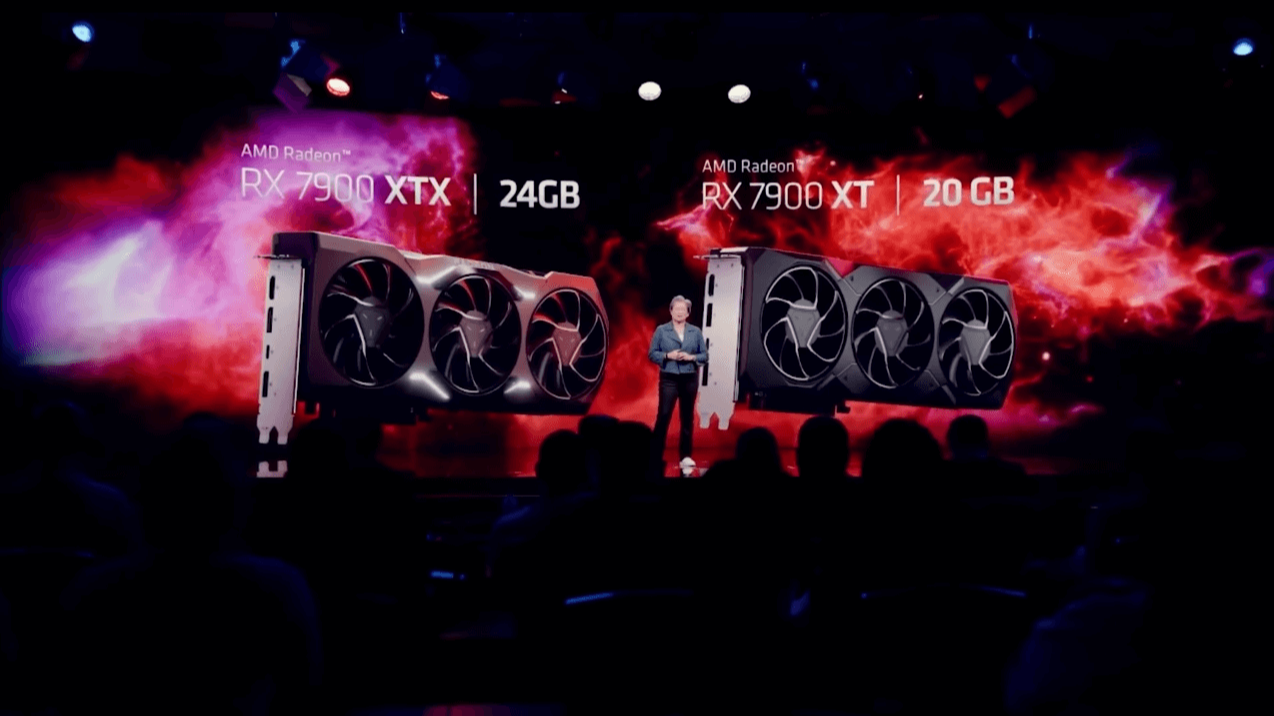RX 7900 XTX and RX 7900 XT - The same eggs, only in profile ... and much cheaper

RX 7900 XTX and RX 7900 XT - The same eggs, only in profile ... and much cheaper
The AMD jokes are officially out of date. The days of barbs about "hot things" are over; back in the days when AMD graphics cards were running at 102°C, and the most popular search for AMD users on Google was “AMD drivers…”

On November 3, 2022, AMD held a presentation of new video cards based on RDNA 3. And since it is impossible to perceive the releases of top video cards in isolation from Nvidia releases, and the Internet is full of dry numbers, we just compare offhand...
The competitor GeForce RTX 4090 3090
Remarkably, throughout the presentation AMD never mentioned Nvidia, did not try to earn a few points on the comparison, but talked about their new graphics card, as if it has no competitors...but it does.

The RX 7900 XTX and RX 7900 XT would compete with the GeForce RTX 4090, but the latter is again ahead of the planet in terms of dry numbers. If you narrow down all the technical characteristics of video cards to one point, we have 82.6 Teraflops at GeForce RTX 4090 against 61 Teraflops at RX 7900 XTX. It would seem to be not enough...
The new solution from AMD came out in two variants: in the pre-premium and top-of-the-line configuration:

The RX 7900 XT's 20 GB is 4 GB more than the near-top GeForce RTX 4080, but 4 GB less than the top-end GeForce RTX 4090, which would equate the RX 7900 XT to the defunct GeForce RTX 4085; however the GeForce video memory standard looks better, the fault is GDDR6X - its bandwidth is 25% higher than the previous GDDR6. The letter "X" brought Nvidia millions of dollars, it was critical for mining, but after the events of 2022, the prospects of mining remain vague. For gamers, on the other hand, GDDR6 and GDDR6X play a role for preferred screen resolution. Whereas GDDR6X allows you to enjoy 4K with ray tracing enabled, with GDDR6 is limited to comfortable gaming at only 1440p resolution.
Gray power
During the presentation, AMD emphasized gray power, while in the presentation of Nvidia not a single game was presented without RTX and DLSS 3.0 enabled. The latter, by the way, is not implemented in all games.

The clear performance graph speaks for itself:



AMD successfully dumping Nvidia
But the most important thing is the price. The market dictates its own rules: while the shelves and the secondary market are oversaturated with battered mining GeForce RTX 3090, AMD was able to offer a more productive, budget analogue.

We haven't seen a budget gaming graphics card in five years. Such a step towards consumers will not go unnoticed.
